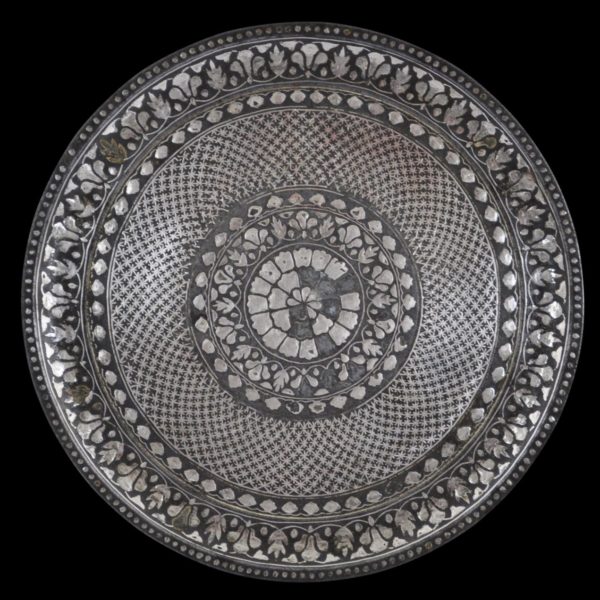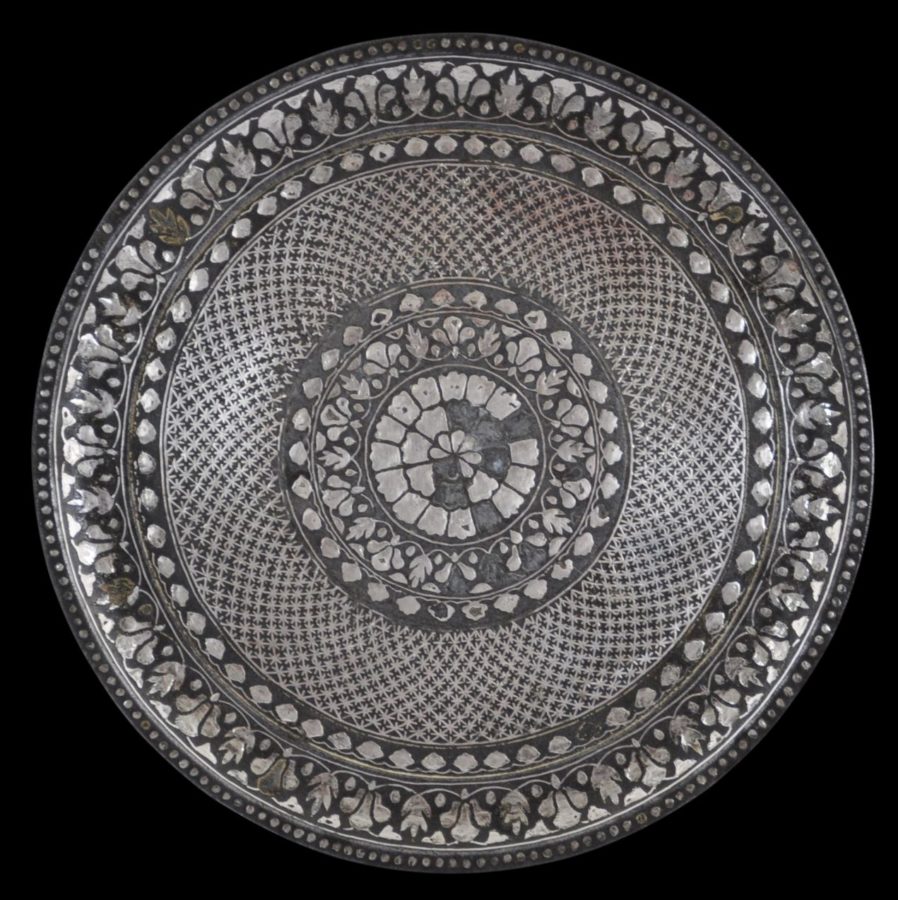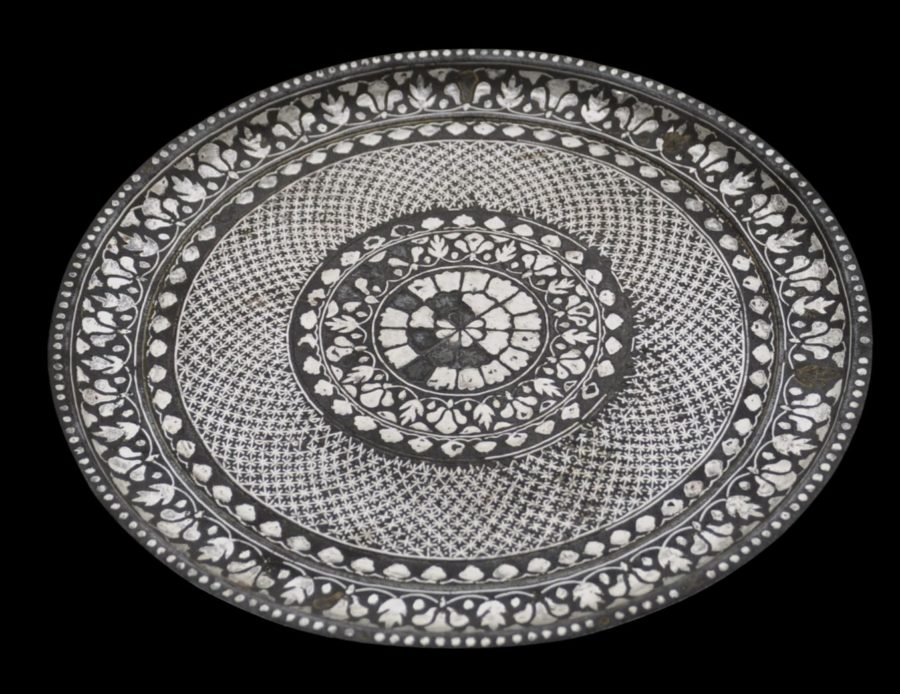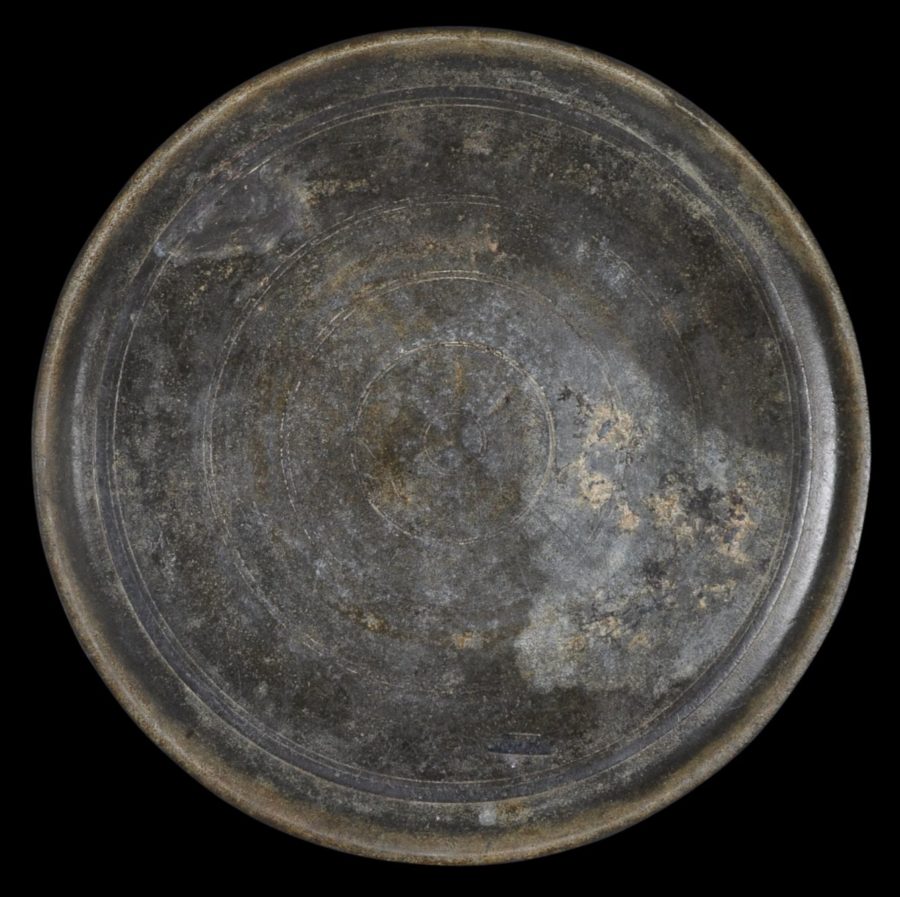This circular tray or tashtari is decorated in a form of Bidri work known as tehnishan work. It has a central lotus flower roundel around which there are multiple borders of floral and foliate scrolls, including one broad border of multiple star or asterisk motifs.
A betel box (pandan) and tray with a similar asterisk decoration that is attributed to early 19th century Hyderabad is illustrated in Lal (1990, p. 97).
Bidriware originated in the city of Bidar in the Deccan. It is cast from an alloy of mostly zinc with copper, tin and lead. The vessels are overlaid or inlaid with silver (as is the case here), brass and sometimes gold. A paste that contains sal ammoniac is applied which turns the alloy dark black but leaving the silver, brass and gold unaffected.
Bidriware caused great interest at the Great Exhibition in London in 1851. It found new European markets and helped to keep alive the craft as demand fell in India with the decline of many of the smaller courts and landed families.
The example here is in fine condition but has losses to the silver inlay.
References
Lal, K., Bidri Ware: National Museum Collection, National Museum New Delhi, 1990.
Mittal, J., Bidri Ware and Damascene Work: in Jagdish & Kamla Mittal Museum of Indian Art, Jagdish & Kamla Mittal Museum of Art, 2011.
Stronge, S., Bidri Ware: Inlaid Metalwork from India, Victoria & Albert Museum, 1985.
Zebrowski, M., Gold, Silver & Bronze from Mughal India, Alexandria Press, 1997.





